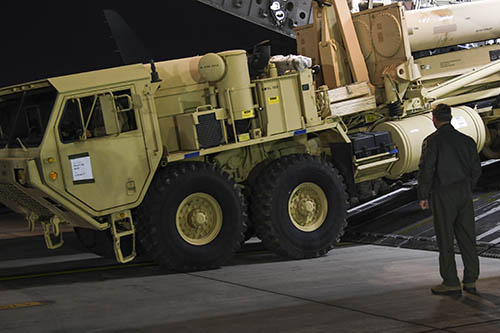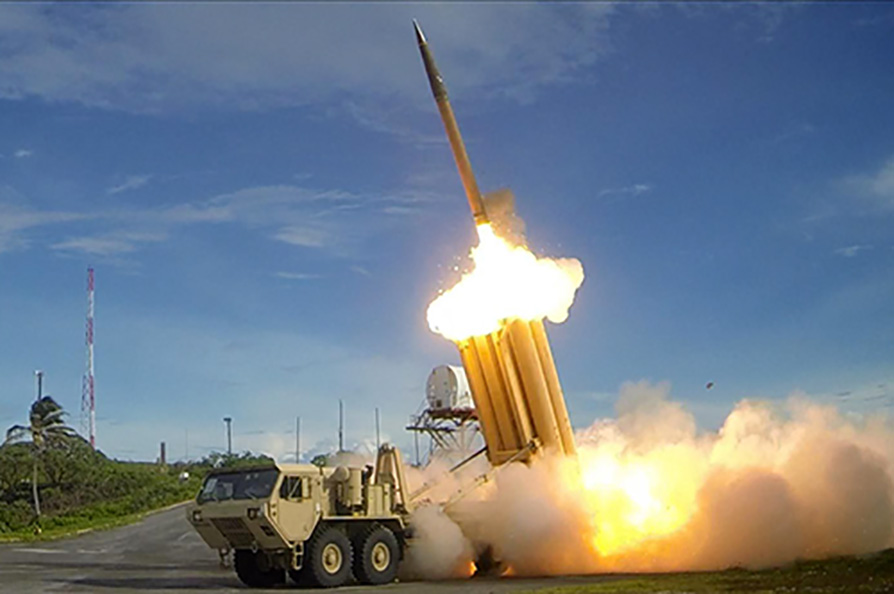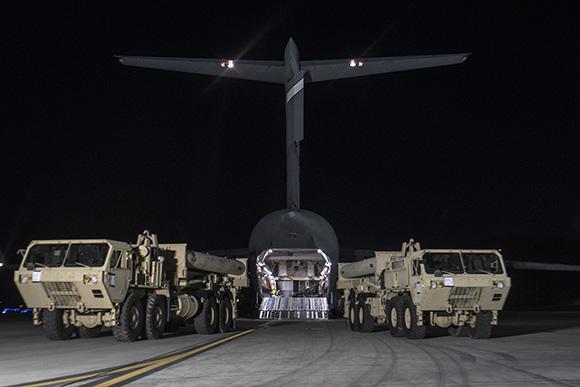To counteract a Pyongyang missile attack, the Pentagon has decided to deploy a ground-based THAAD (Theater High Altitude Area Defense) complex in Seongju, South Korea.
The missile is equipped with a direct impact header - or explosive - has a weight of 800 kg, a length of 6,17 meters and a diameter of 0,37 meters. The maximum mileage is 200 km and is operated by Raytheon radar I / J (8-20 GHz), with a range of 1000 km. Precisely this radar system is the cause of Beijing's concerns, as it could be used to monitor the activities of Chinese air forces at the Korean Peninsula border.
The deployment of that missile complex causes some doubts as the weapon system in question was not designed to intercept short-range cruise missiles or short-range balloon missiles (type SCUD-C), which would probably be used by Pyongyang in an initial phase of an attack on South Korea.
The field of use of the THAAD system is cd High Defense Layer (defense area of 1600 x 500 km, interception quota greater than 35000 meters). When speaking about ballistic missile defense, according to NATO terminology, the term is used tier when it comes to defense level while using the word layer (layer) to describe the amount that interceptors can reach. Usually the odds from 35000 meters are so-called upper layer (atmospheric interception); the dimensions below the 35000 meters are within the lower layer.
 In addition, before arriving at anti-missile systems, it should be emphasized that any anti-missile defense apparatus, in order to be effective, requires a number of preconditions. First, the need to find out about the preparations for the attack, possibly before the missile is launched. Then locate the missiles, understand who they are, understand what kind of heads they carry and which goals they are directed to.
In addition, before arriving at anti-missile systems, it should be emphasized that any anti-missile defense apparatus, in order to be effective, requires a number of preconditions. First, the need to find out about the preparations for the attack, possibly before the missile is launched. Then locate the missiles, understand who they are, understand what kind of heads they carry and which goals they are directed to.
Another indispensable condition is a command and control system, since the interception of a ballistic missile requires a huge amount of data, the ability to process and filter it, and distribute it to the various users in order to identify the threat and put taking the most appropriate procedures to counteract it.
It is also true that the American deployment of an anti-missile system could be interpreted by North Korea as a priori acceptance by Washington of wanting to take on a defensive tactic, leaving Pyongyang the initiative and the freedom to choose freely when how and where to hit.

(photo: US DoD)












